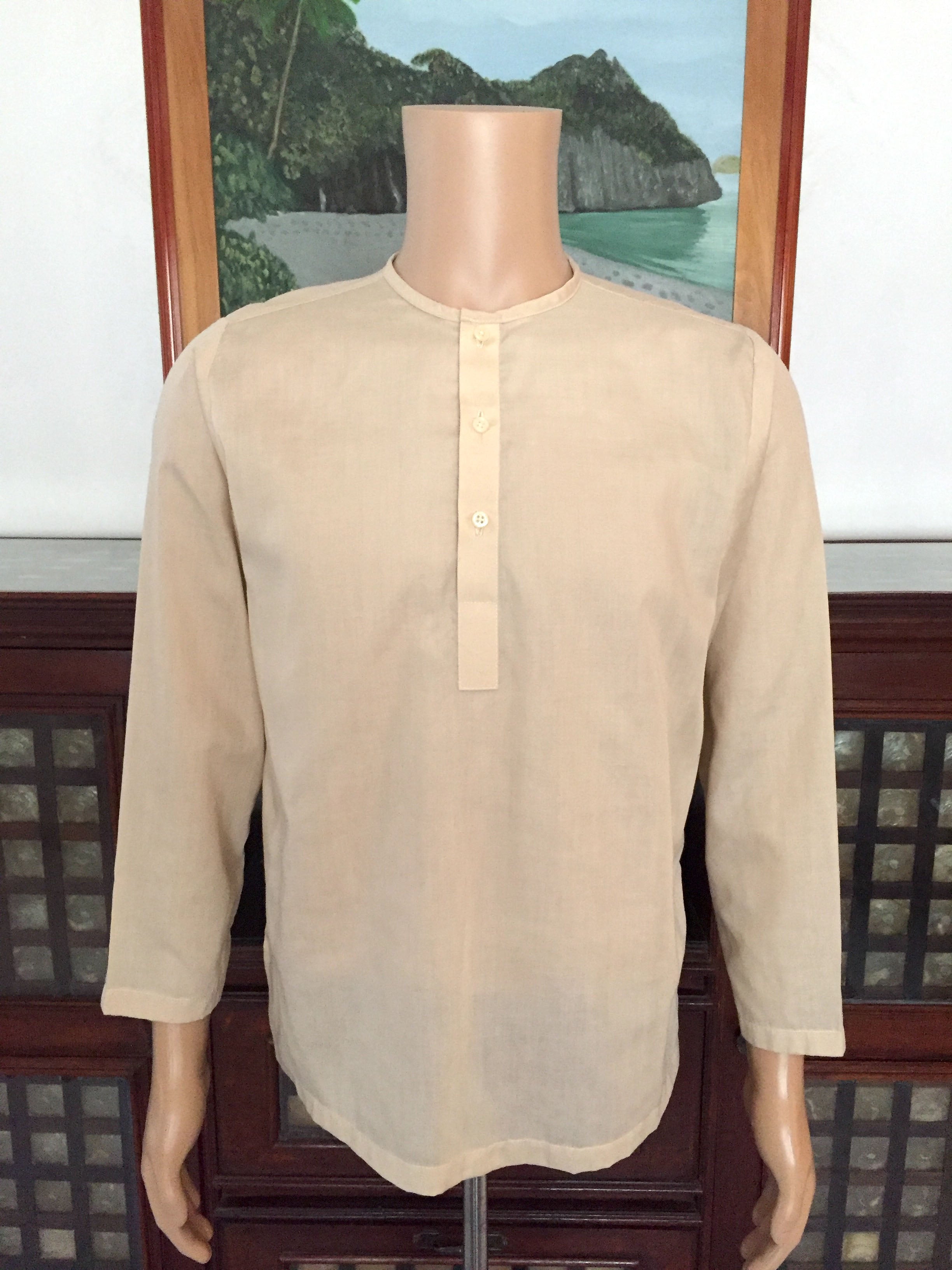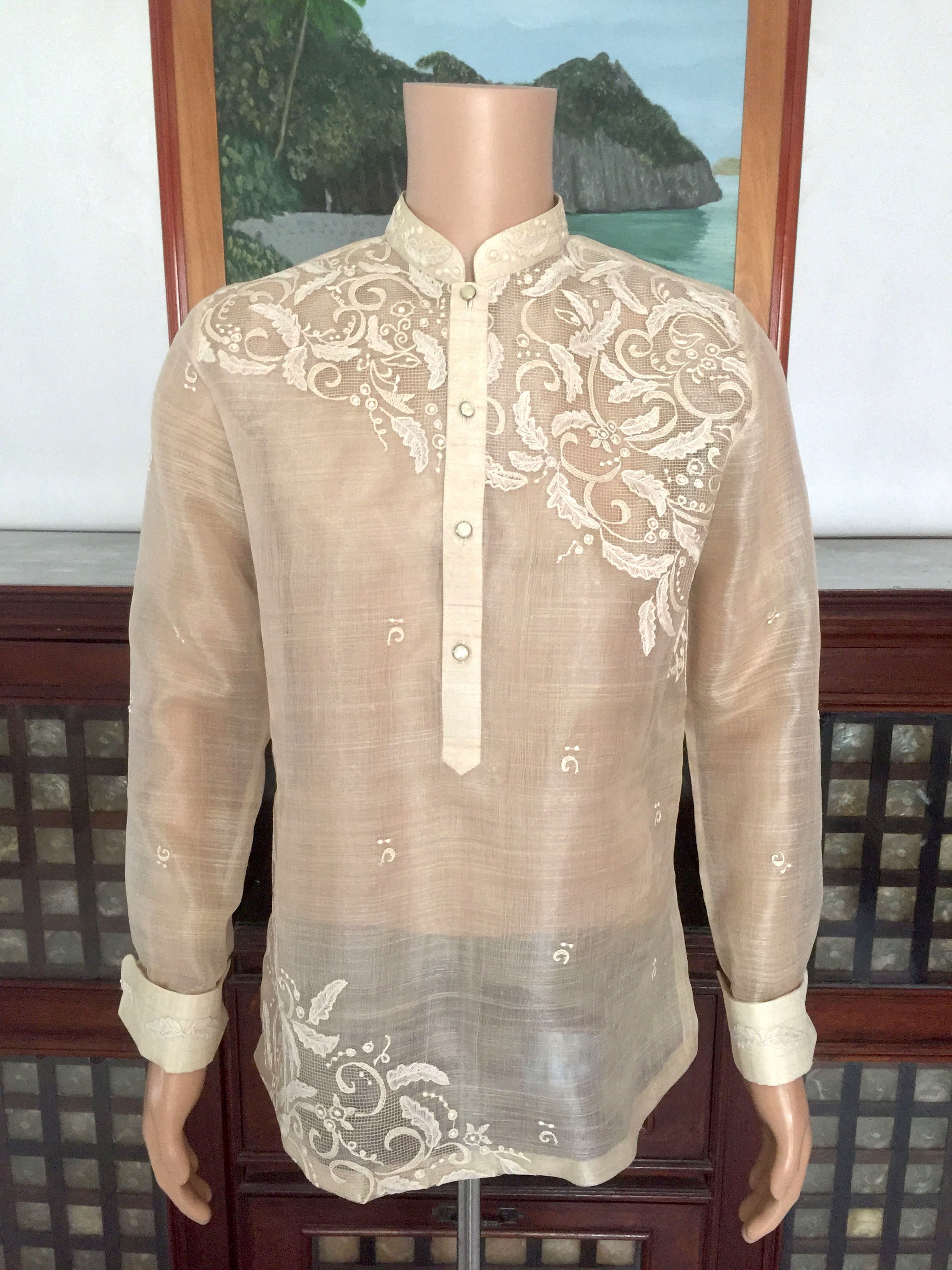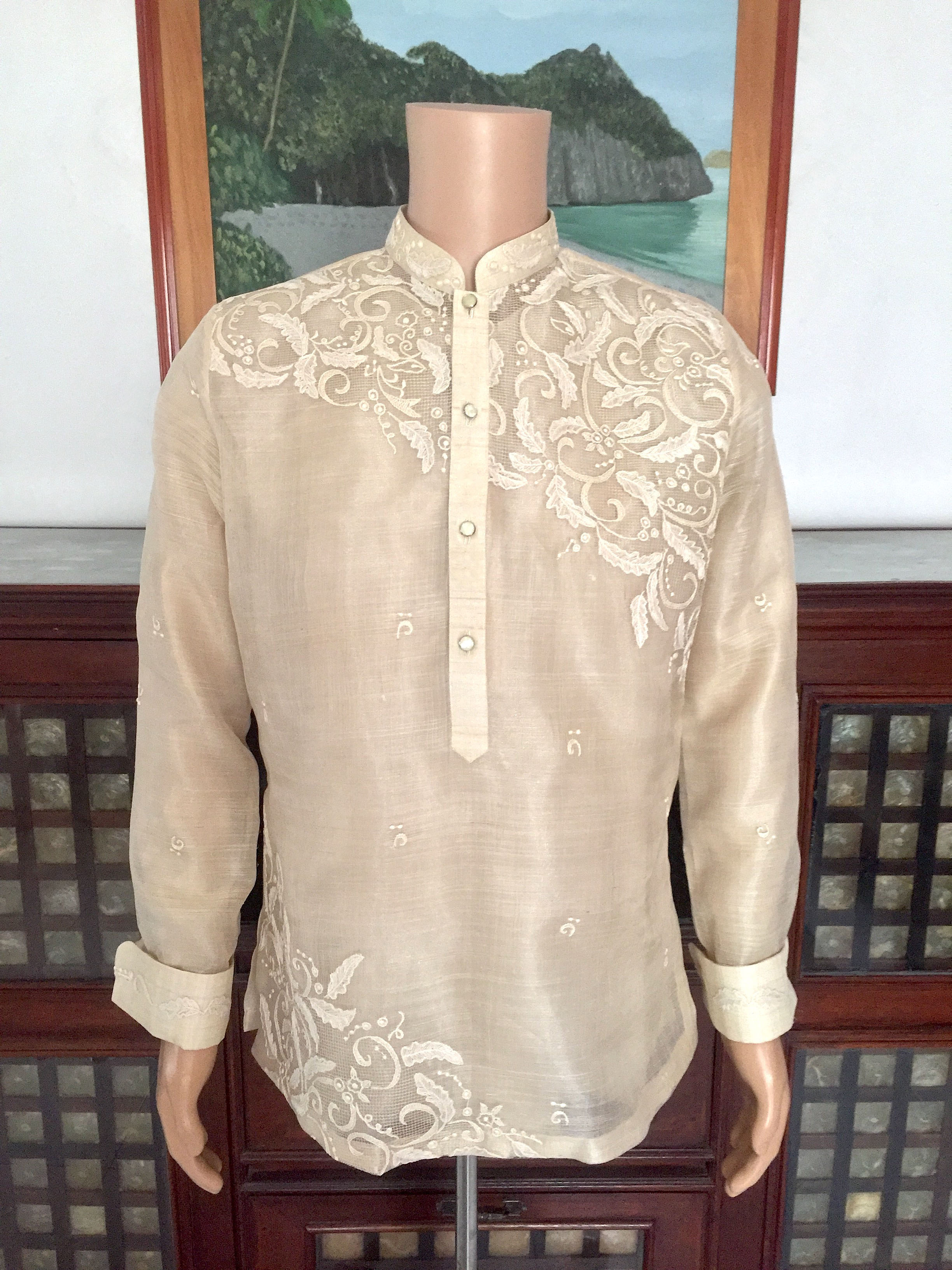Fabric Options
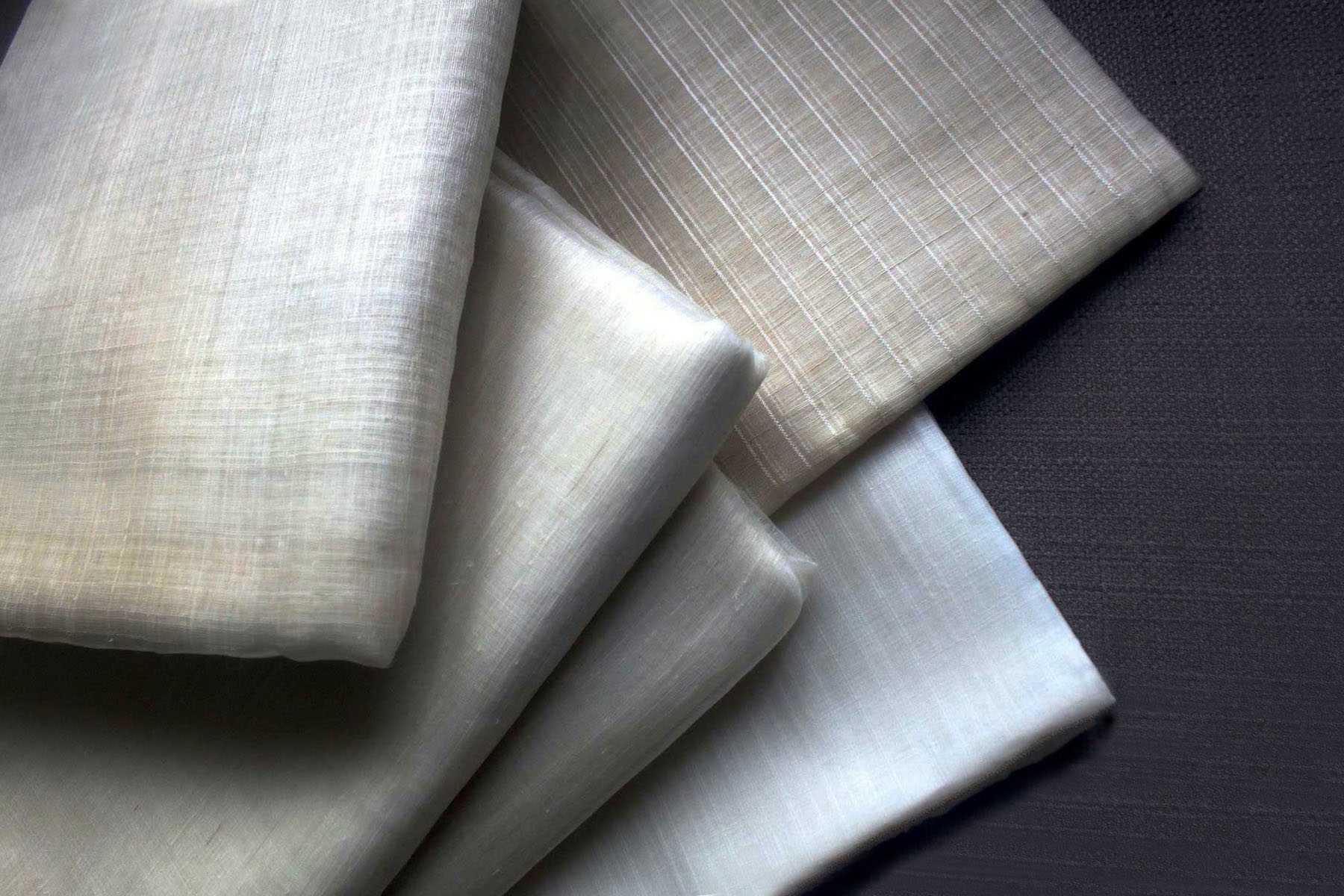

The most crucial element in constructing a barong is choosing the perfect fabric. Options can vary in terms of fibers, weave, colors, and other properties that may arise from incorporating decorative elements. The fabric dramatically affects the look of a barong, influencing the appearance of the person wearing it. Therefore, a wise choice of material can result in an exquisite fashion that can be carried over into the way you carry yourself. And this, in turn, makes wearing your barong more fun.
Piña
Piña is a sheer fabric made from the fine lustrous fibers of the leaves of red Spanish pineapple. It has a yellowish tinge or a light champagne-gold color. When you examine the fabric closely, you'll notice intertwined fibers (longitudinal warp and transverse weft) with uneven thickness typical of the fine pineapple leaf fibers. Extracting the delicate pineapple fibers is labor intensive, and this arduous process makes the pineapple fabric expensive.
The elegant piña is the finest of all Philippine handwoven fabrics. Unfortunately, it's rare and only available in small quantities from a handful of weavers because most weavers prefer to weave the less expensive piña-silk that they can sell quickly in large quantities.

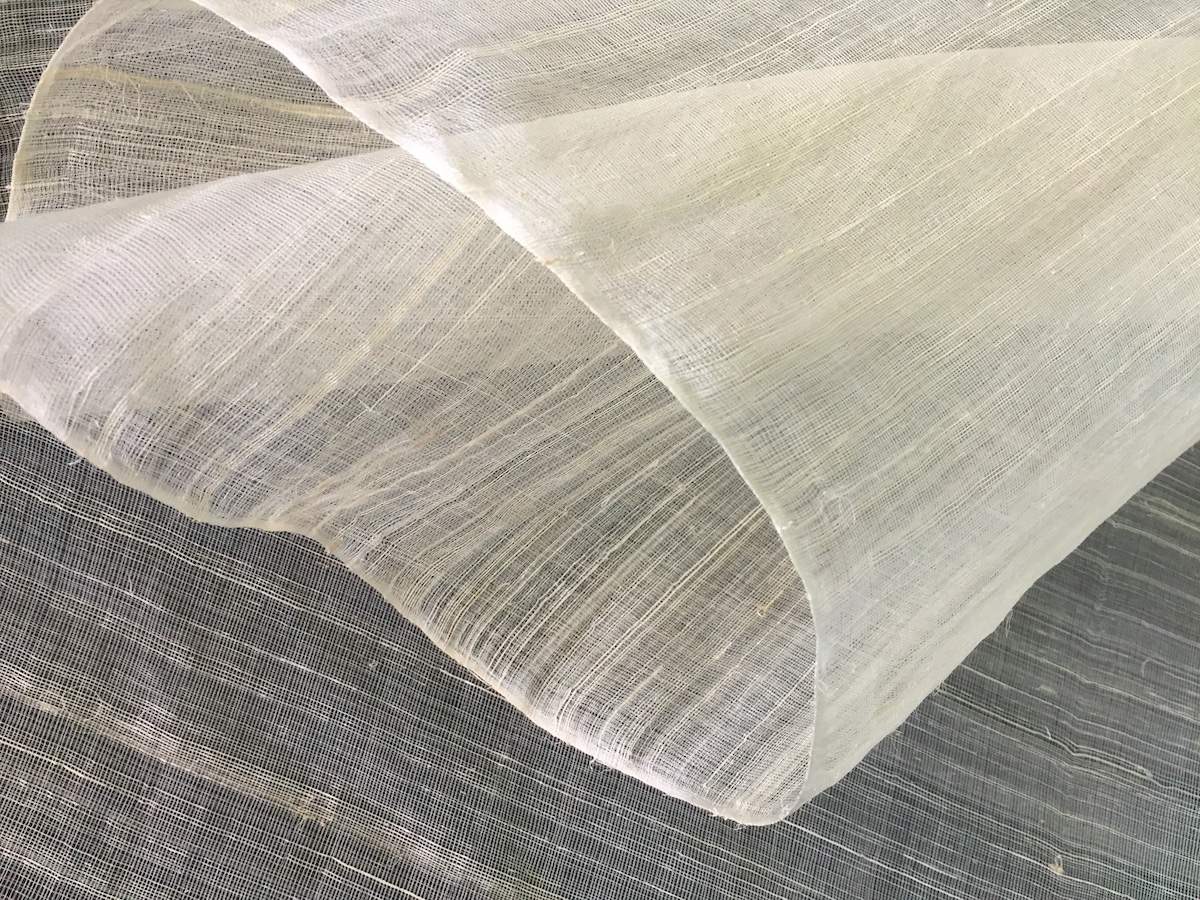
Piña-Silk
Piña-Silk (Piña-Seda or Pineapple-Silk) is a handwoven fabric from pineapple and silk fibers. It has a yellowish tinge which is lighter than that of piña fabric. When you examine this fabric closely, you'll notice the silk fibers running lengthwise (longitudinal warp) with even thickness intertwined with the noticeable piña fibers (transverse weft) with uneven thickness.
This fabric has an abundant supply so you can find this in most barong shops throughout the Philippines. However, a lot of sellers refer to piña-silk as "piña" and to piña as "piña-orig" (orig as an abbreviation of the word "original"). So when buying a piña barong, it would be wise to ask the seller to confirm if the fabric is piña and not piña-silk or to inspect the fibers closely to get the right idea of the fabric.
Abaca-Cotton
Abaca-Cotton is a handwoven fabric from cotton strands and abaca fibers (extracted from the leaf sheet attached around the trunk of the abaca plant, a species of banana native to the Philippines). This fabric is thicker and less transparent than piña fabric.
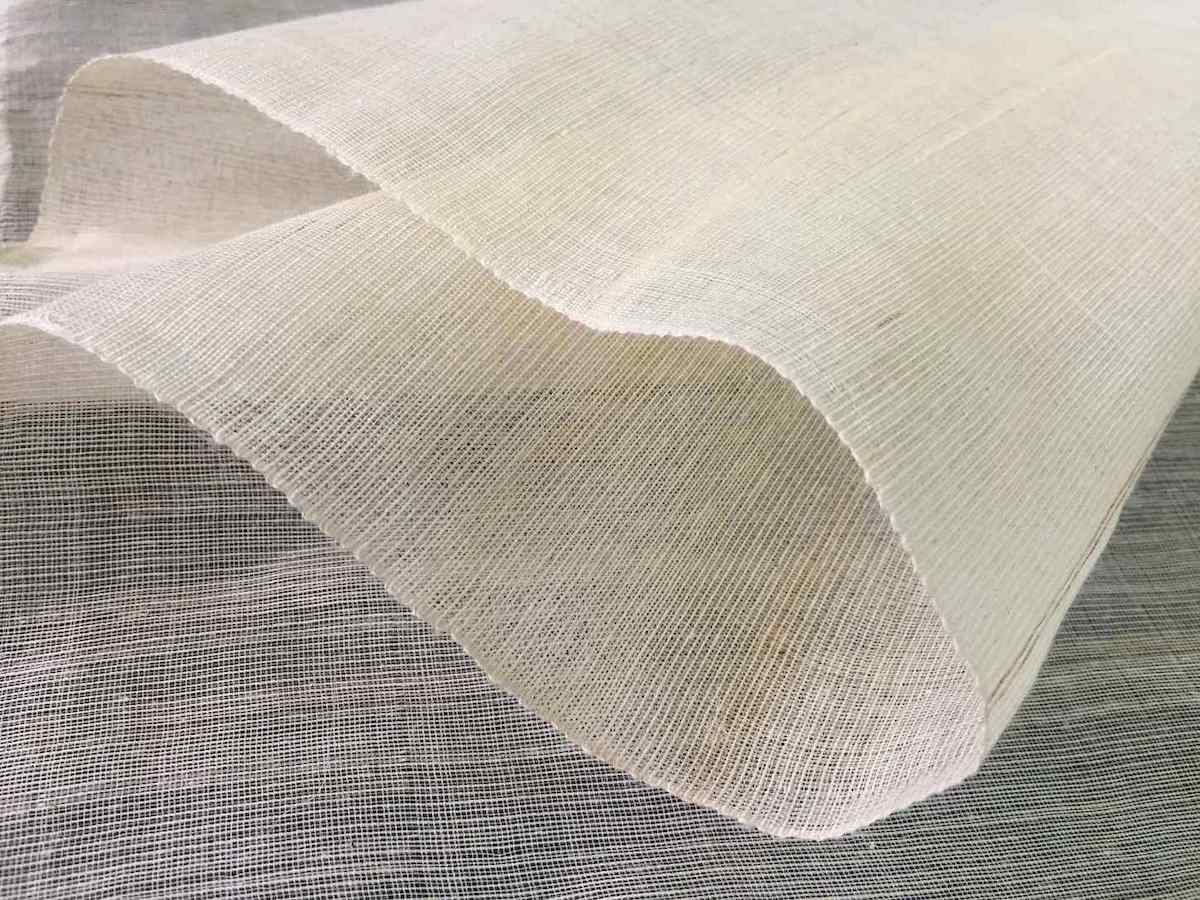
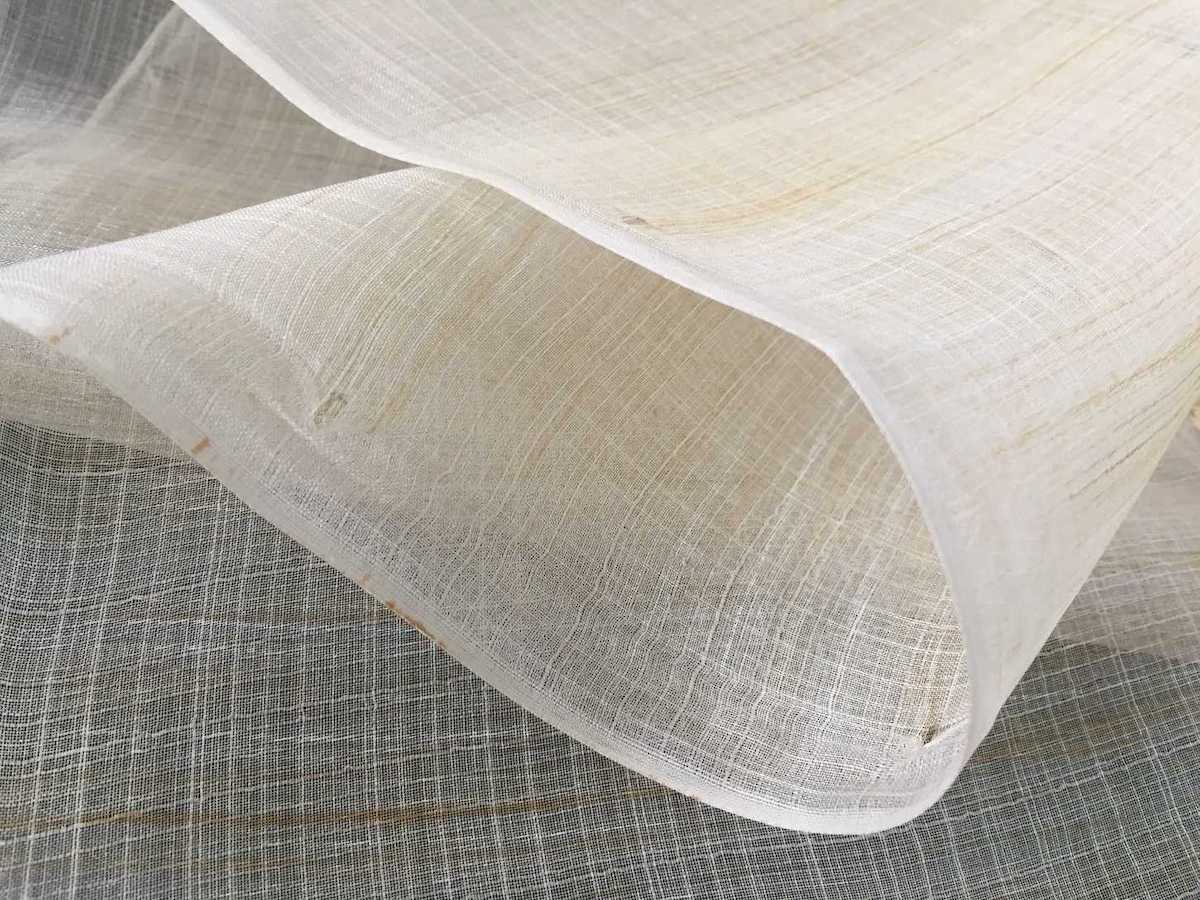
Cocoon
Cocoon (Cocoon Silk) is a woven fabric from silk with transparency somewhat similar to the transparency of piña but without the sheen. The fabric's natural color is off-white.
Cocoon-Piña is cocoon hand-painted with piña streaks that give it a distinct color somewhat similar to that of piña. The quality of this fabric depends on the paint application techniques that vary widely from supplier to supplier.
Jusi
Jusi, like cocoon, is also a woven fabric from silk but is less transparent. The fabric's natural color is off-white.
Jusi-Piña is jusi hand-painted with piña streaks that give it a distinct color somewhat similar to that of piña. The quality of this fabric depends on the paint application techniques that vary widely from supplier to supplier.
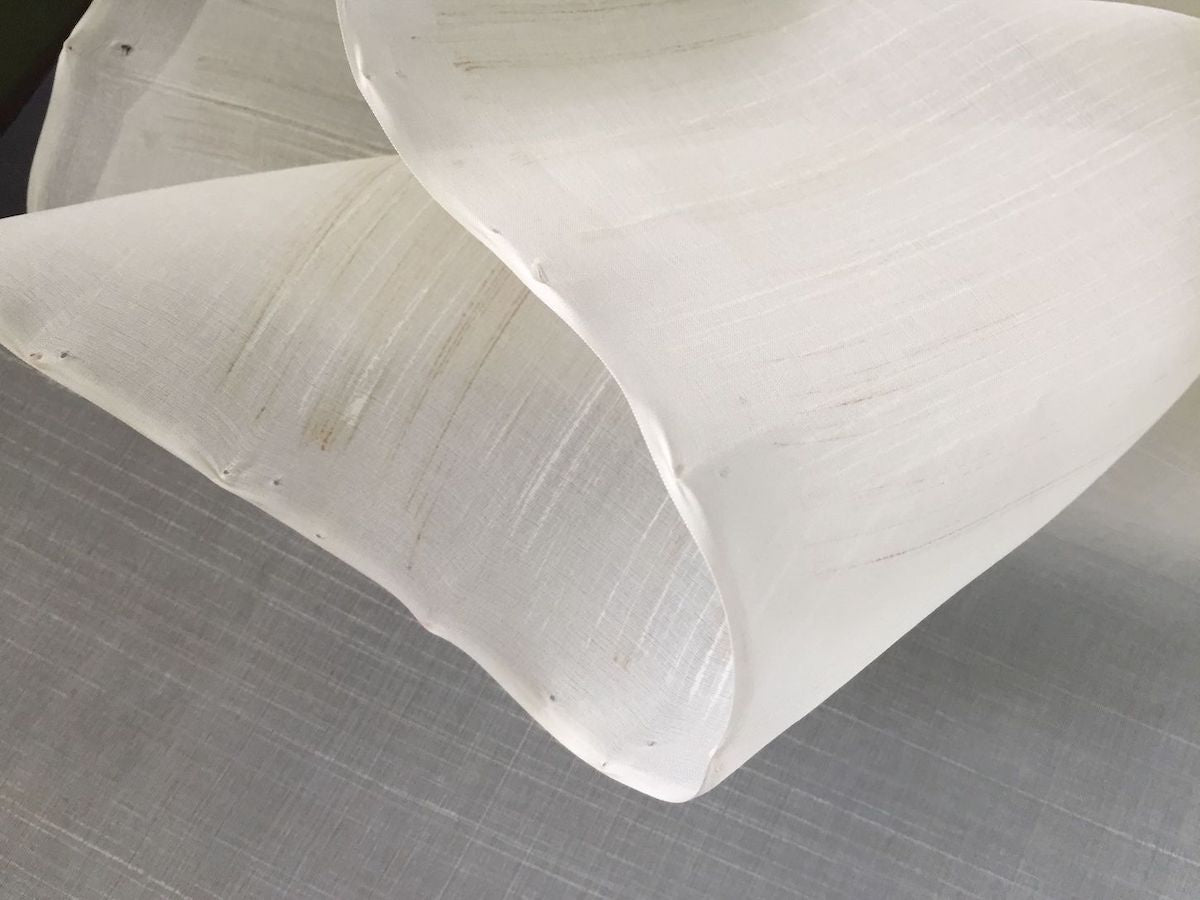
Fabric Comparison Guide
Your Essential Resource for Selecting the Perfect Material for your Barong
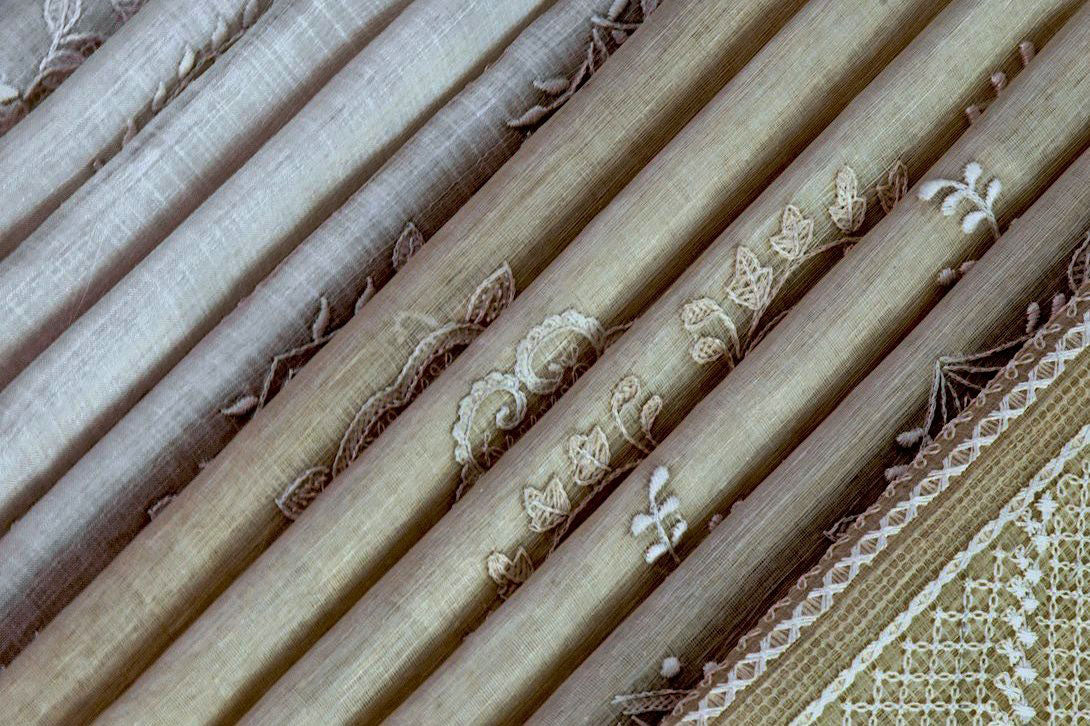

What to Wear Under a Barong
The light, delicate, and translucent barong fabric will show through what's worn underneath it. Since the fabric is see-through, the lines or edges of an undershirt become distinctly visible through the fabric, diminishing the overall appearance and aesthetics of the outfit.
Classic barongs usually feature an organza lining, a sheer fabric, to enhance durability and achieve a polished interior finish. However, classic barongs made of jusi and jusi-piña don't require lining because these fabrics have a high fiber density and a polished finish. We strongly advise against lining classic barongs with thicker fabrics, as this practice disrupts the delicate balance of drape and flow that's essential to the garment's distinctive character. Instead, we recommend opting for a tailor-made Camisa de Chino, a long-sleeved undershirt that's intended to be worn untucked.
Neglecting to wear a suitable undershirt can lead to an unattractive and distracting appearance. To help you with this, we offer a complimentary Camisa de Chino for classic barongs. Wearing this undershirt will significantly enhance your overall appearance, giving you a more sophisticated and refined look.
When wearing a coat barong, it's advisable to opt for an off-the-rack long-sleeved cotton undershirt for enhanced comfort, as coat barongs are typically constructed with thicker interlining and lining materials.


